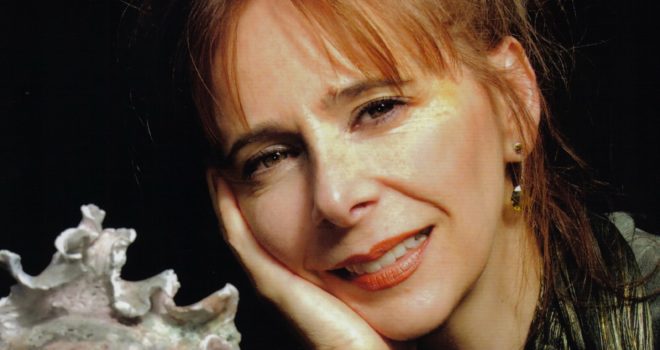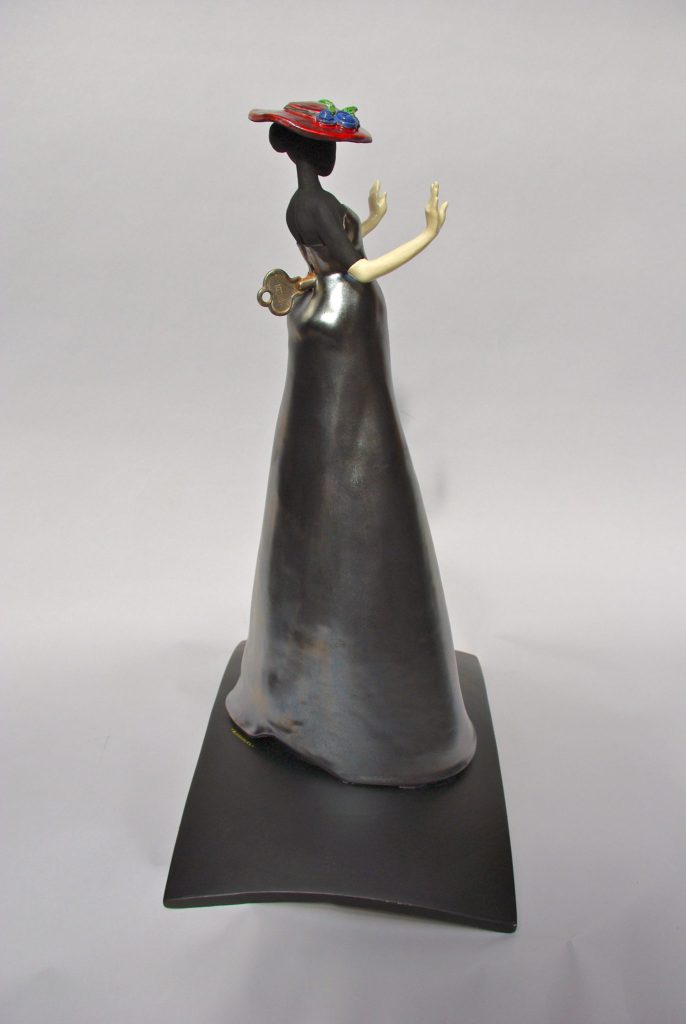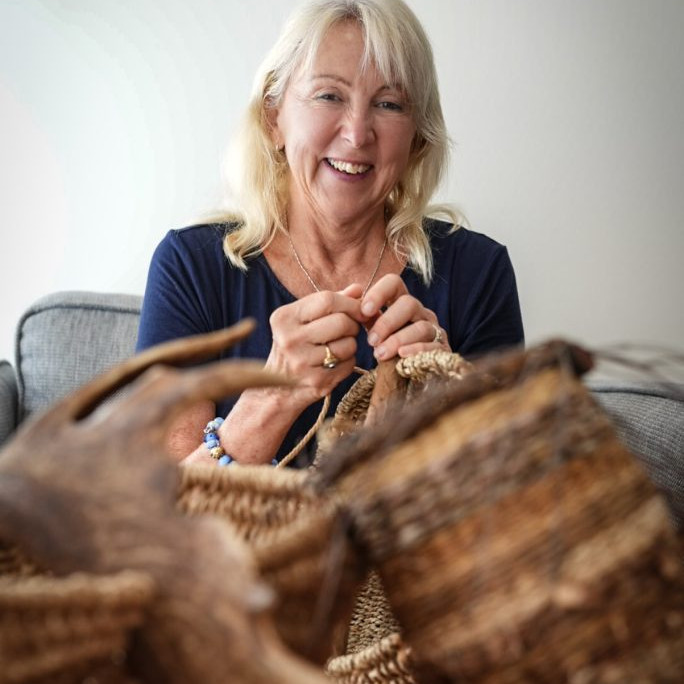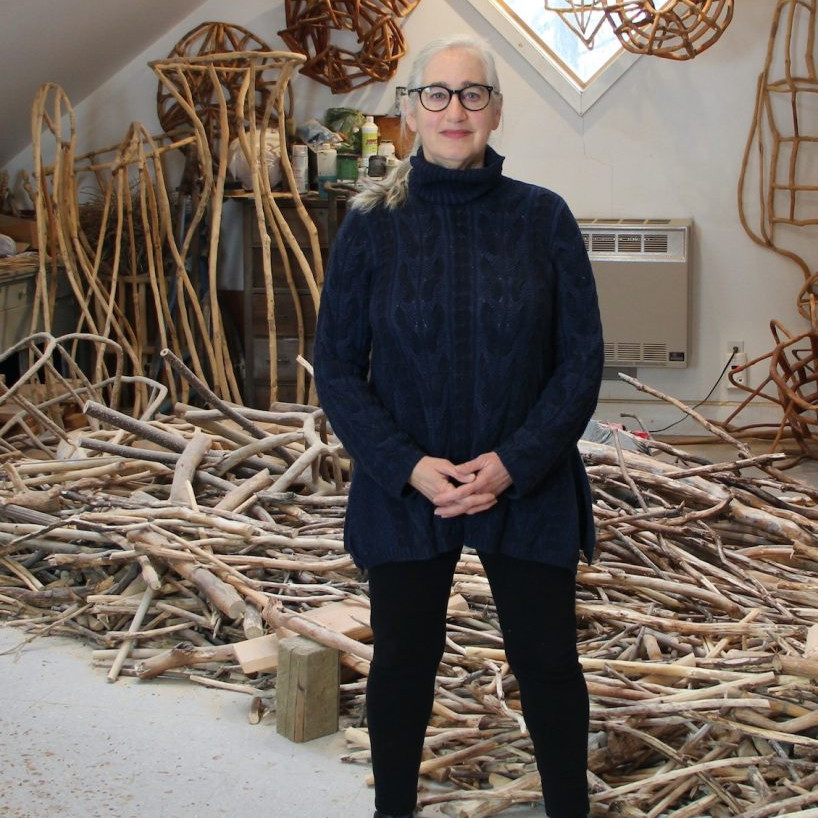Marlene Kawalez Sculptor - Ottawa, Canada.
Can you discuss the way you are currently working using a combination two materials, glass and clay within one piece?
One of the most challenging issues working with the combination of glass and clay is determining the conceptual notion of what it is I wish to create. I feel that every piece must tell a story, express an idea or touch the viewer. It cannot be an empty vessel with no content or substance.
For most of my sculptures I draw from my own life experiences or from those I am fortunate enough to observe. Once I have found my intention, I aim to balance the two materials so they work together in expressing themselves through the concept. The clay, with its strong unyielding presence, represents the exterior or body of the sculpture. The glass, in reverse, embodies the inner voice or spirit of the piece. The contradicting qualities of these two materials never cease to amaze and challenge my work.
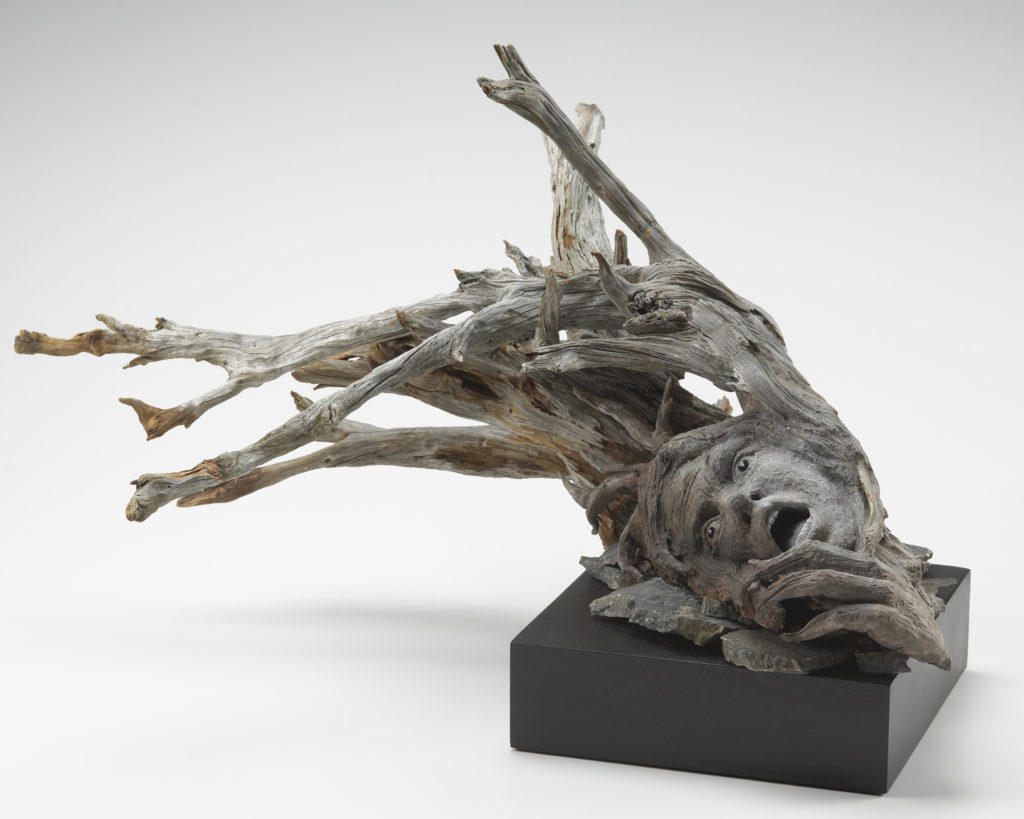
Demise
You are a member of the Ontario Clay and Glass Association can you expand on your own membership with this group and the importance of memberships to this and other associations.
I became a member of the Ontario Clay and Glass Association when I developed an interest in incorporating kiln casted glass with my sculptures. Within this organizations as well as others I have joined, there is such a vast reservoir of talented individuals that inspires me. Many of the memberships I have offer educational opportunities, call for entries in shows, member’s gallery and an annual conference to meet other artists.
You often combine materials can you explain the combinations used in ‘Flying’?
One of my earlier pieces was that of a young child full of joy and
wonderment. She had been sculpted out of raku clay than given a bronze patina. Monarch butterflies, which are very precious to me, became a part of this piece to emphasize sheer freedom. To bring more color and contrast to the sculpture, the butterflies were tinted with a bright orange and strategically placed around her.
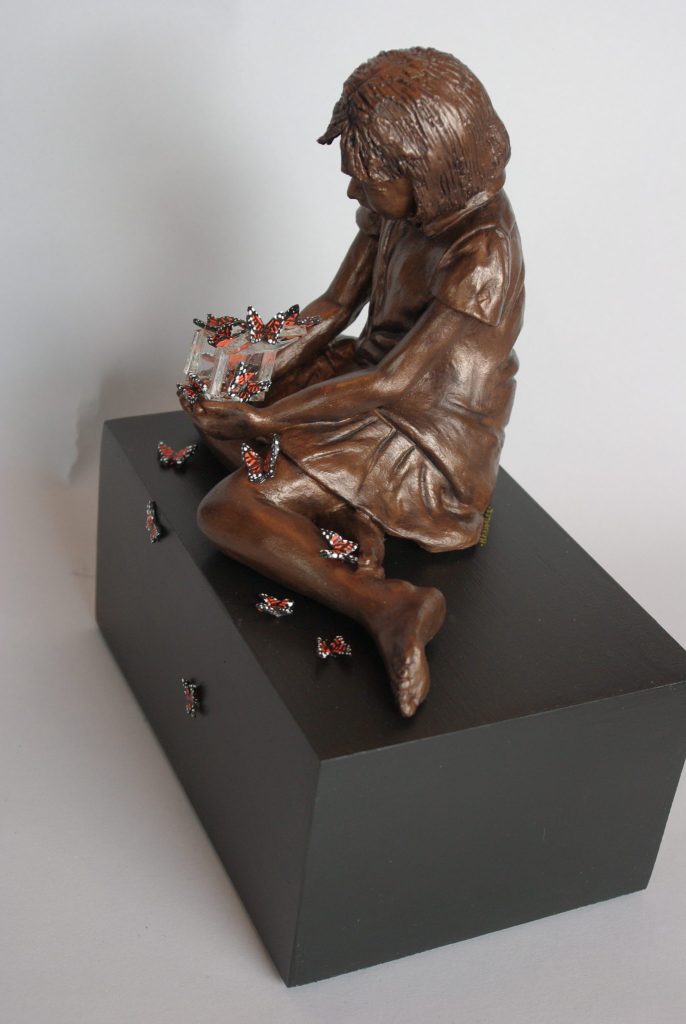
Flying
Expand on your artistic development in relationship to you work.
In the early part of my career my emphasis was dedicated to capturing the human form. I attended various workshops and used live models whenever possible. It was only when I felt comfortable sculpting the physical body did my attention resort to capturing the spiritual essence in my work. With the wisdom and assistance I received from internationally and local sculptors, I learned various finishing techniques that I presently use. Smoke, saggar and raku became a few of my chosen favorites.
With changes in my life and my personal directions,there became need to alter the direction in my work. To reach deeper and to go be beyond the surface to what the heart and soul needed to convey. In order to achieve my personal aspirations, I needed to find another medium that could amalgamate with clay, yet be totally distinctive. It was the translucent, ethereal properties of glass that captured my interest and my heart.
There was such a dynamic diversities between the two that it was necessary to educate myself in all its unique properties. I attended several workshops in Canada and the US to further my understanding.
At present I am involved in creating a body of work that fully integrate both media.
‘Twilight’ is made using raku clay and mixed medium can you explain the techniques you have used in the making of this piece.
Twilight was the first in a series to be created with the use of an extruder. The process involves a block of clay placed within this devise and long one inch coils are extracted. The coils are wrapped together and the form slowly starts to emerge. Unlike previous sculptures, I start assembling the piece from the base and progress upward towards the face. Internal clay structures are attached to the sides of the piece as it grows in size for additional support and tiny vents are left open to prevent trapped air from occurring. Once the piece has slowly dried, anywhere from weeks to a months, the piece is placed in the kiln than fired. The final patina was achieved by firing it through a smoke technique.
‘I have been creating pieces that often explore themes of loss, longing, and the peeling away of exterior layers to reveal internal complexities’ discuss this statement in relationship to two of your pieces.
“Twilight” was born in a period of great loss and sadness. The overwhelming feeling of grief paralyzed her and she goes within herself to find some comfort and solitude. Similar to many, she has tried to suppress all that is buried beneath the layer of denial and pain only to find her tangled emotion raising to the surface.
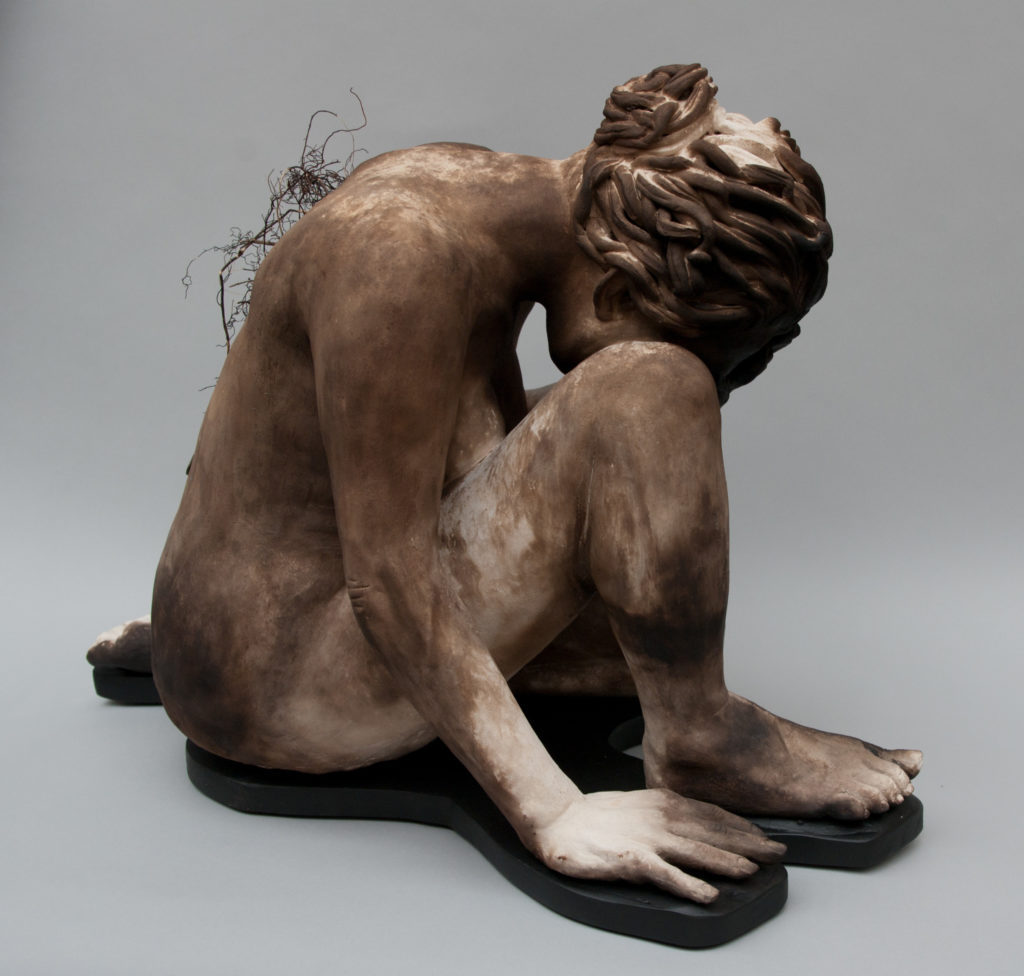
Twilight
“Cradled” The tiny fragile woman cradles herself seeking the comfort and love that is absent. She is filled with a empty loneliness and cannot find compassion only seclusion. Her eyes and heart have withered into hibernation and cease to feel the loving hands beneath her.
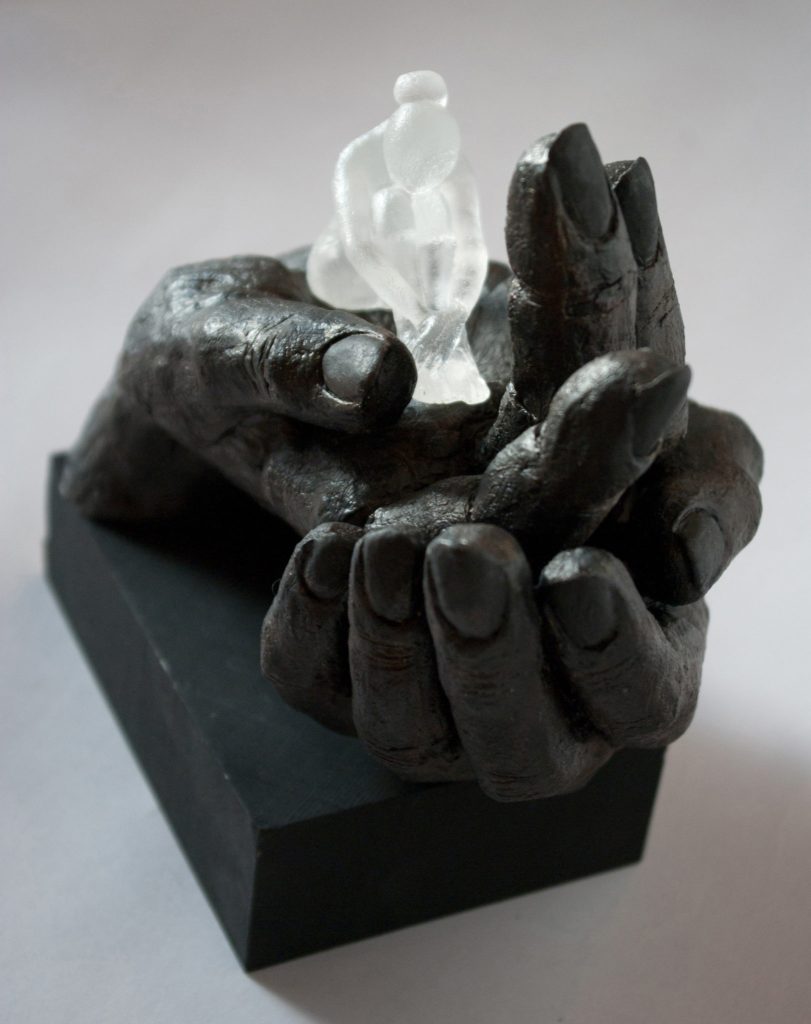
Cradled
Discuss; ‘Angel’
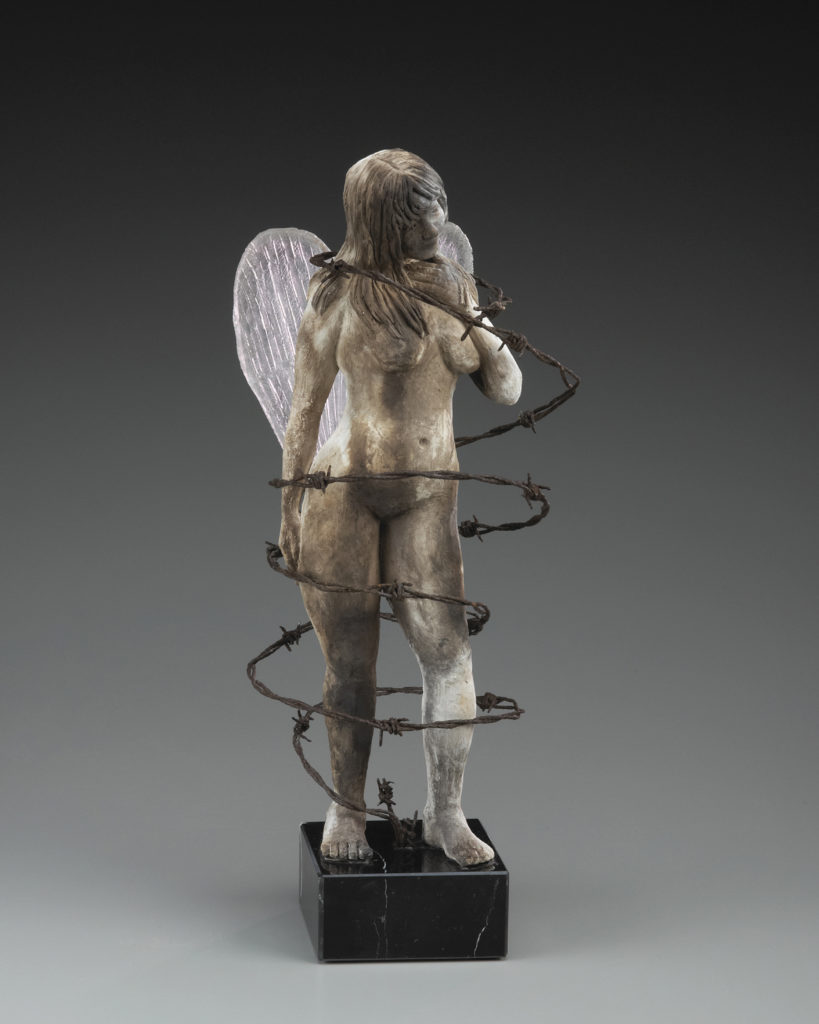
Size: Length 7” X Height 19” X Width 8”
Materials: Clay, kiln casted, glass,barb wire and granite
Inspiration: In the stillness of the cemetery a shroud of silence and lost secrets remain hidden by the simple historical church. It was once vibrant and alive with people and is now filled with the spiritual force of its past patrons.
Angel represents the guardian and keeper of these souls, standing in constant watch over them and forever bound to this place.
You have a full series ‘Ladies in Waiting’ discuss the series.
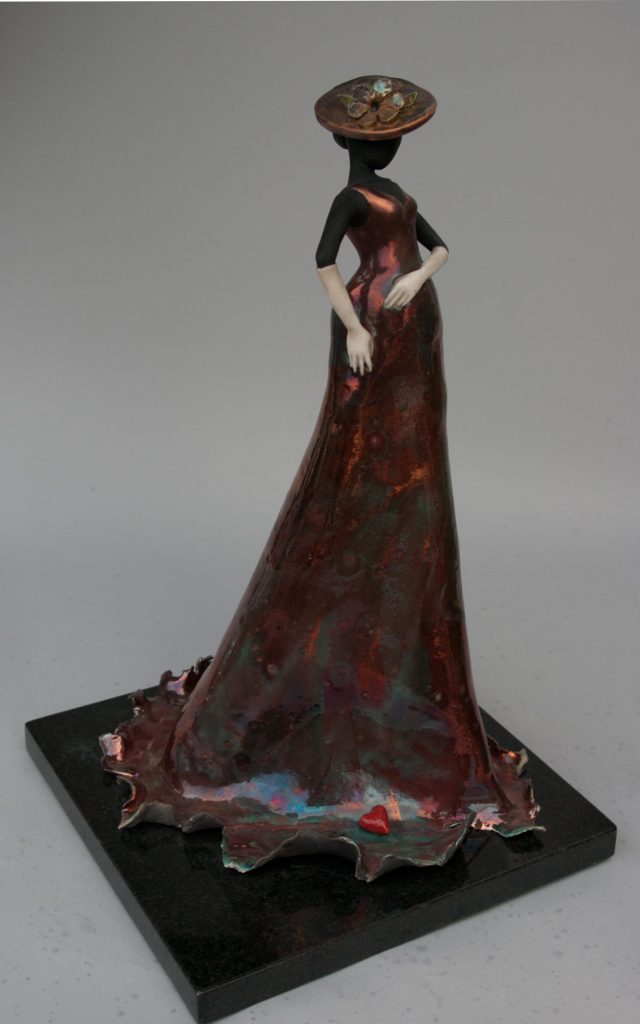
‘Ladies in Waiting’ was a series created for gallery shops. Each Lady was uniquely hand sculpted, resulting in one of a kind figurines. I created approximately 35 of these sculptures with the earlier ladies embellished with unique pieces of mixed media such as antique keys, barbwire, locks, hemp etc. Over time they evolved into a more tapered and nuanced form.
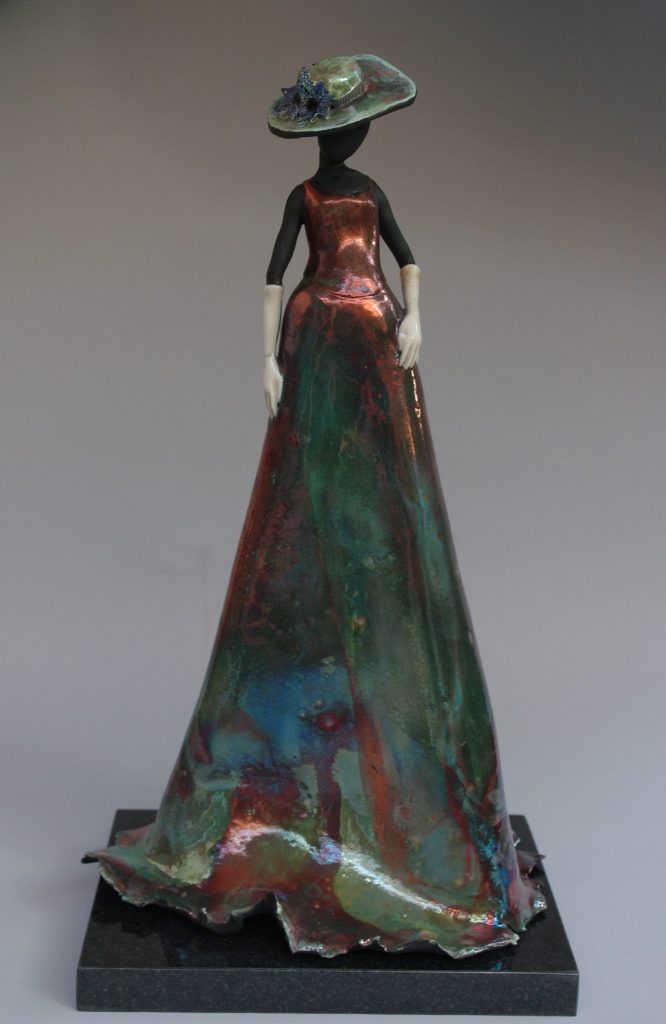
The earlier pieces were finished with glazes such as crackle, terra sigillata and crawl, however, I was soon inspired to use a more unique finish. The raku glaze created the most luminous spectrum of color that could not be replicated. The inspiration behind this series came from my fascination with simple gestures; how the tilt of the head or position of the hand, created a pervading tone and revealed a personal narrative.
Each Lady, unique in her appearance, had her own story to disclose.
You found wood to work with in ‘Uprooted’ where do you find your source material and how much to your store to future work.
In my nature series, I incorporated rocks, driftwood, moss, branches and many other elements into my work. Mother Nature was the best source for all of these elements. Throughout the countryside, forests and shores there is a bountiful supply waiting for that creative process. When I discover that wondrous rock or twisted piece of driftwood, I must have it. These treasures are stashed away in my studio for the next special project.
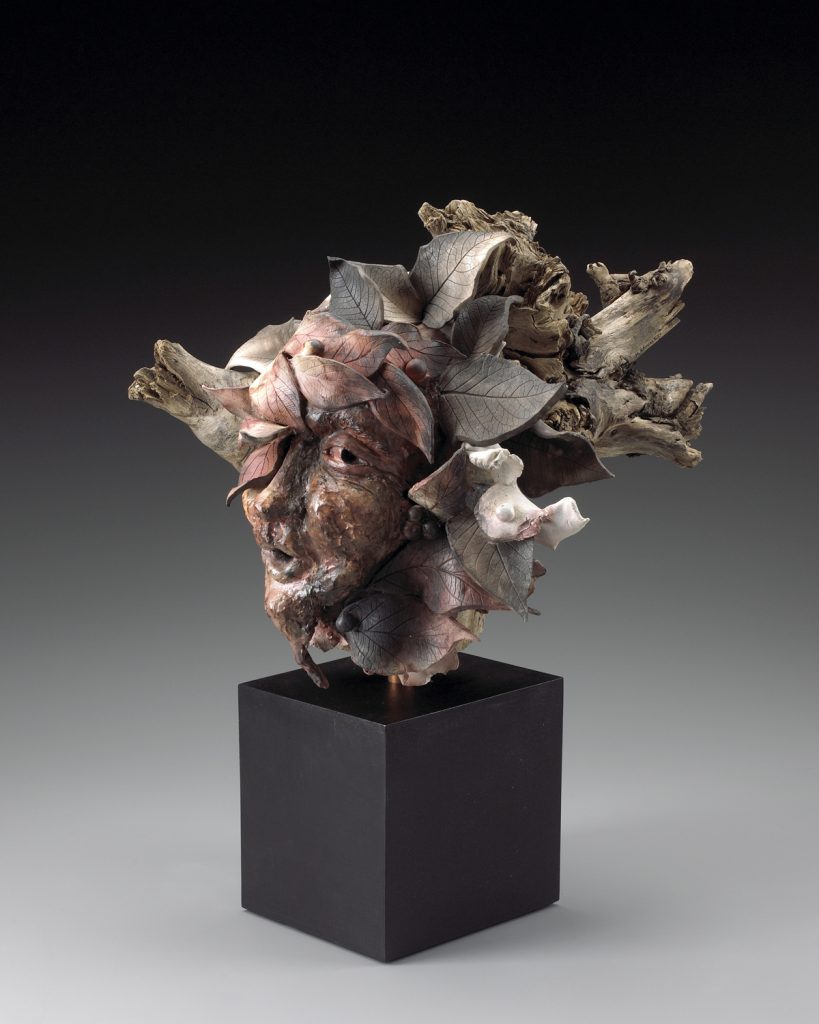
Uprooted
Discuss the importance of exhibitions to you and your work.
As an artist it is essential for me to exhibit my work. I enjoy sculpting and the invigoration of the creative process, but it is equally important to me to find an audience or that special person who can connect with my sculpture. It is those moments that inspire me.
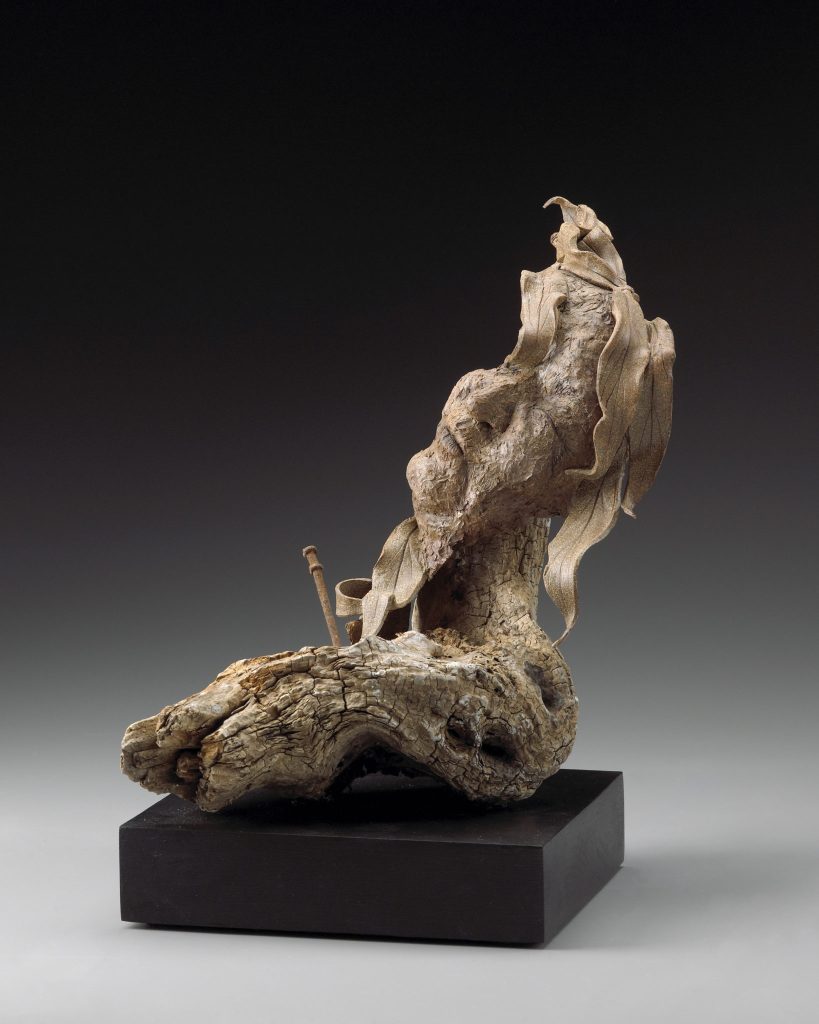
Nailed
Tell about your studio and the specific needs you have for it to work for you.
Recently I have moved into a new studio with adequate room for 1 glass and 2 regular kilns. In addition, I was able to equip it with a sand blaster and drill press which has opened up new avenues for my artwork. However, in saying that, the most important features it possesses are the many windows and patio doors that offer natural light and a view of a thriving pond with all of nature’s creatures.
Contact details:
Marlene Kawalez
Email:
Marlene Kawalez, Ottawa, Canada
Interview by Deborah Blakeley, November, 2016
Think a colleague or friend could benefit from this interview?
Knowledge is one of the biggest assets in any business. So why not forward this on to your friends and colleagues so they too can start taking advantage of the insightful information the artist has given?
Other artists you may be interested in:


